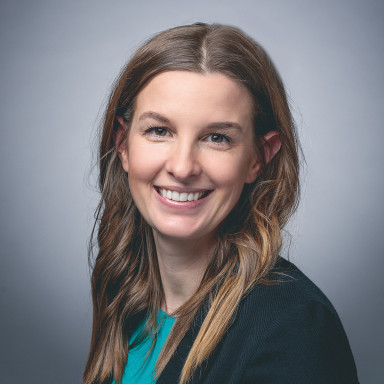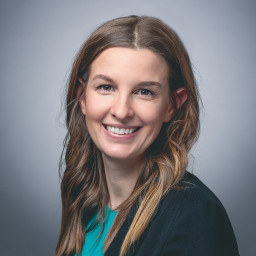Revenue in the second quarter rose 13% to £6.9bn, reflecting growth across all segments but particular strength in Specialty Medicines.
Excluding a one-off, non-cash £699m charge related to Pfizer investments and ViiV Healthcare, operating profits were up 22% to £2.0bn. Higher royalty income and sales growth more than offset the impact from a higher proportion of lower-margin Xevudy (Covid-19 solutions) sales, higher freight costs and commodity prices and increased investment in new product launches.
Excluding the impact of covid sales, the group now expects 2022 sales growth of 6-8%, up from 5-7%. Underlying operating profit is expected to grow between 13-15%, up from 12-14%.
A 16.25p dividend was announced, bringing the total for the half to 27.5p.
Shares were broadly flat following the announcement.
View the latest GlaxoSmithKline share price and how to deal
Our View
GSK's first set of results after spinning off its consumer healthcare arm, Haleon, were impressive. One quarter of strong growth isn't necessarily a reason to roll out the red carpet, but it adds to our confidence in the group's ability to deliver on its proposed targets.
Underlying operating profit this year is expected to be well ahead of the group's long-term goal for annual growth of 10% per year. Strength in Specialty Medicines, which treat rare diseases and therefore command a premium, underpin this goal. The group aims to grow its portfolio with new treatments rather than tweaking their usage as it has done in the past. This opens the door for greater growth, but more risk as well.
The drug approval process is complicated, with many treatments never seeing the light of day. That means hundreds of thousands can be funnelled into drug development that bears no fruit. GSK's hoping to reduce this margin of error by focusing on rare treatments backed up by gene-specific data, but there are no guarantees.
Cancer treatment is one key area for growth, with several late-stage treatments in the pipeline, including monelotonib via the Sierra Oncology acquisition for which a New Drug Application was filed with the US FDA in June. HIV treatments offer another bright spot, and it's encouraging to see drugs the group newly brought to market make up over a third of the revenue for this segment.
These new entrants are a key part of GSK's future as generic competitors eat away at pricing power for some of the group's existing treatments.
That brings us to debt, which has long been a sticking point for GSK. Haleon took with it about half old Glaxo's debt pile, leaving behind a more nimble operation. This took place after the quarter finished, and should give GSK some breathing room to spend on development and marketing to protect brand power. It's also allowed the group to make good on its dividend pledges. Dividend payments have been more than covered by free cash flow, but there are no guarantees.
Ultimately GSK looks to be firing on all cylinders following its separation from Haleon. However with a valuation above the long-term average, it'll take more a than a rosy quarter to move the needle.
GlaxoSmithKline key facts
All ratios are sourced from Refinitiv. Please remember yields are variable and not a reliable indicator of future income. Keep in mind key figures shouldn't be looked at on their own - it's important to understand the big picture.
Second Quarter Results (Currency Neutral)
Sales in the Europe and International divisions rose 25% and 14% respectively, while sales in the largest market, the US ,were up 7%.
Growth in covid treatment Xevudy helped revenue in Specialty Medicines rise 35% to £2.7bn. Excluding Xevudy, sales were up 14% reflecting improvement across all therapy areas with double-digit growth in Oncology, and Immuno-inflammation, Respiratory and Other Sales. HIV sales were 7% higher at £1.4bn with new medicines delivering 41% of revenue in this segment.
Revenue in Vaccines rose 3% to £1.7bn, as a strong performance from Shingrix in the US and Europe offset the return to more normal buying patterns for paediatric and adolescent vaccines.
General Medicines saw revenue rise 2% to £2.5bn as the impact of generic competition in the US, Europe and Japan was offset by growth in respiratory and the post-pandemic rebound of the antibiotic market.
Free cash flow for the quarter swung from a £20m outflow to £264m, reflecting improved profitability and favourable working capital movements. Net debt was £21.5bn on 30 June, up from £19.8bn at the end of the year thanks to the impact of dividend payments and exchange rates on foreign debt.
This article is original Hargreaves Lansdown content, published by Hargreaves Lansdown. It was correct as at the date of publication, and our views may have changed since then. Unless otherwise stated estimates, including prospective yields, are a consensus of analyst forecasts provided by Refinitiv. These estimates are not a reliable indicator of future performance. Yields are variable and not guaranteed. Investments rise and fall in value so investors could make a loss.
This article is not advice or a recommendation to buy, sell or hold any investment. No view is given on the present or future value or price of any investment, and investors should form their own view on any proposed investment. This article has not been prepared in accordance with legal requirements designed to promote the independence of investment research and is considered a marketing communication. Non-independent research is not subject to FCA rules prohibiting dealing ahead of research, however HL has put controls in place (including dealing restrictions, physical and information barriers) to manage potential conflicts of interest presented by such dealing. Please see our full non-independent research disclosure for more information.

